What is a Technical Job Cover Letter
A technical job cover letter is a crucial document that accompanies your resume when applying for technical positions. It serves as a personalized introduction to the hiring manager, providing context and highlighting the most relevant aspects of your skills, experience, and qualifications. Unlike a resume, which is a factual summary, a cover letter allows you to showcase your personality, express your enthusiasm for the role, and explain why you are a perfect fit for the company. It’s your chance to make a strong first impression and persuade the employer to read your resume in detail. A well-crafted cover letter is a powerful tool that can significantly increase your chances of landing an interview.
Purpose of a Technical Cover Letter
The primary purpose of a technical cover letter is to demonstrate your suitability for a specific job. It allows you to go beyond the bullet points of your resume and explain how your skills and experience align with the job requirements. The cover letter provides an opportunity to tell a story, connecting your past experiences with the needs of the employer and showing how you can contribute to their success. It also offers a chance to highlight your accomplishments and showcase your unique value proposition. By effectively communicating your qualifications and demonstrating your understanding of the role and the company, a cover letter helps you stand out from other applicants.
Why is a Cover Letter Important
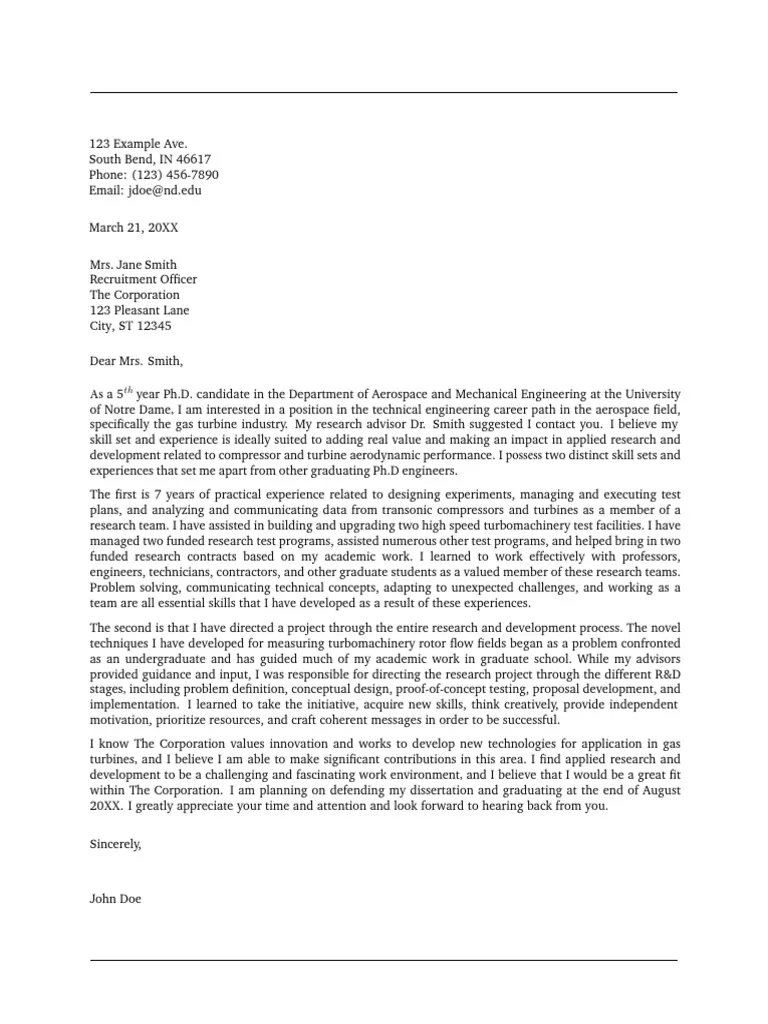
A cover letter is an important document because it provides context and personality that a resume lacks. It’s your chance to show the hiring manager that you’re not just another applicant; you’re someone who has taken the time to learn about the company and the specific role, and you are genuinely interested in the opportunity. It allows you to address any potential gaps in your resume, such as career changes or periods of unemployment, by providing explanations and demonstrating the skills you gained during those times. Moreover, a cover letter provides a platform to showcase your writing skills, which are essential in many technical fields, highlighting your ability to communicate clearly and concisely. This personalized approach can significantly boost your chances of getting your foot in the door and making it to the interview stage.
Key Elements of a Technical Cover Letter
A well-structured technical cover letter comprises several key elements, each serving a specific purpose. These elements work together to create a compelling narrative that captures the hiring manager’s attention and showcases your qualifications. By including these key elements, you can ensure that your cover letter is professional, informative, and persuasive, ultimately increasing your chances of securing an interview. The structure of your cover letter is just as important as its content, and following a standard format will help make your letter easy to read and understand. The following sections highlight the main components of a great technical cover letter.
Contact Information
At the top of your cover letter, include your contact information. This usually consists of your name, phone number, email address, and LinkedIn profile URL. This ensures that the hiring manager can easily reach you if they want to schedule an interview. Make sure your email address is professional, and your LinkedIn profile is up-to-date, reflecting your current experience and skills. Ensure that the information is accurate and current, as this is the primary way for the hiring manager to contact you about a job opportunity.
Hiring Manager’s Name
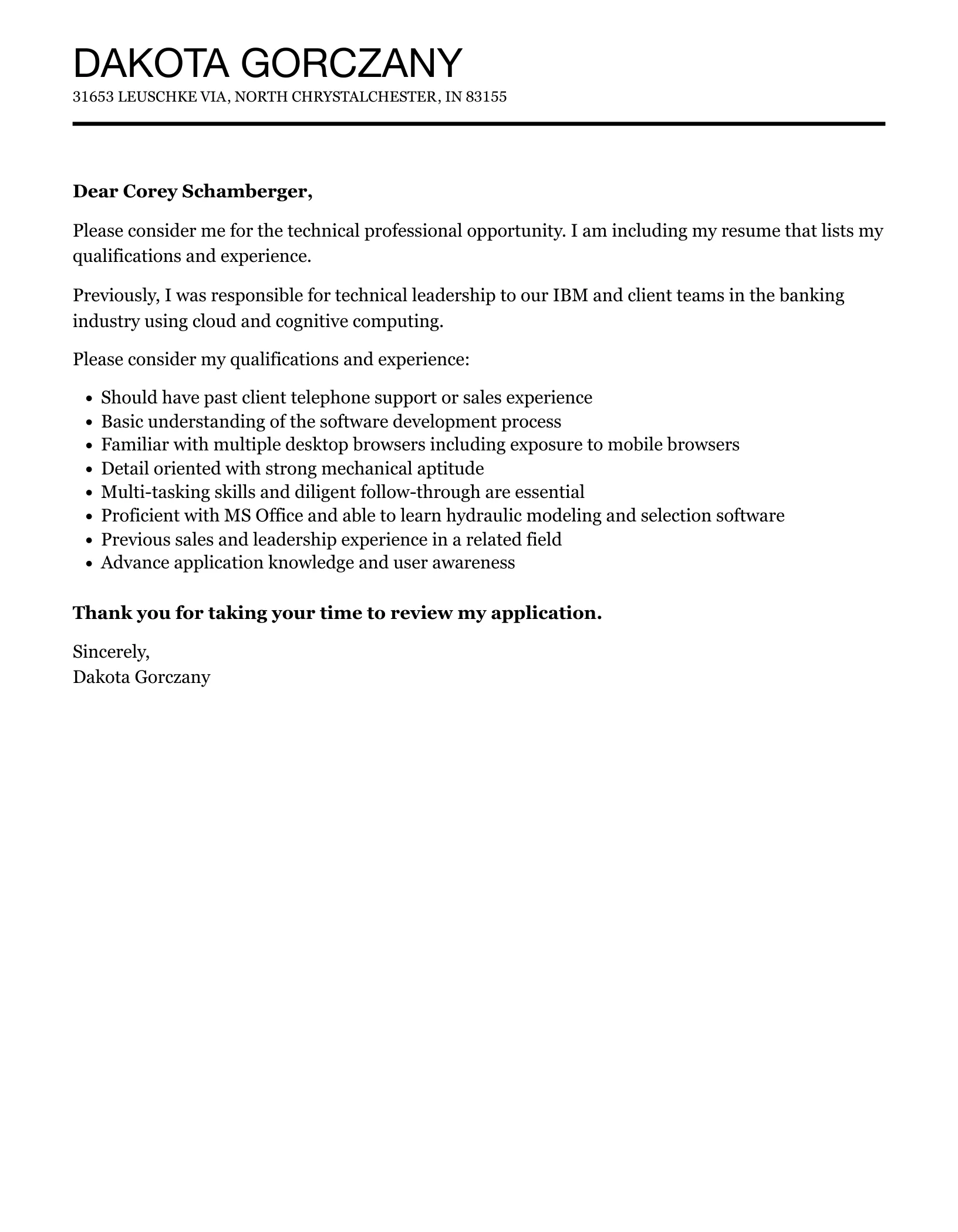
Whenever possible, address your cover letter to a specific person. Research the hiring manager’s name and title, and use it in your greeting. Addressing the letter to a specific person shows that you have taken the time to learn about the company and shows a level of professionalism and initiative that impresses employers. This also makes your application feel more personal and less like a generic mass mailing. If you cannot find the hiring manager’s name, you can use a general greeting like “Dear Hiring Manager” or “Dear [Department Name] Hiring Team.”
Personalized Greeting
Begin your cover letter with a personalized greeting, such as “Dear Mr. / Ms. [Last Name]” or “Dear Hiring Manager.” The greeting should be formal and professional. Avoid generic greetings like “To Whom It May Concern.” If you know the hiring manager’s name, using it demonstrates that you’ve done your research and are genuinely interested in the opportunity, which will help your cover letter stand out from the crowd. Personalizing the greeting makes your letter feel more engaging and shows that you care about the position.
Opening Paragraph
The opening paragraph should immediately capture the reader’s attention. State the position you are applying for and where you found the job listing. Briefly mention your most relevant skill or experience that aligns with the job’s requirements. Show your enthusiasm for the opportunity and the company. The opening paragraph is your first chance to make a strong impression, so make it count. Keep it concise and engaging, and provide a brief overview of why you are a good fit for the role.
Highlighting Relevant Skills and Experience
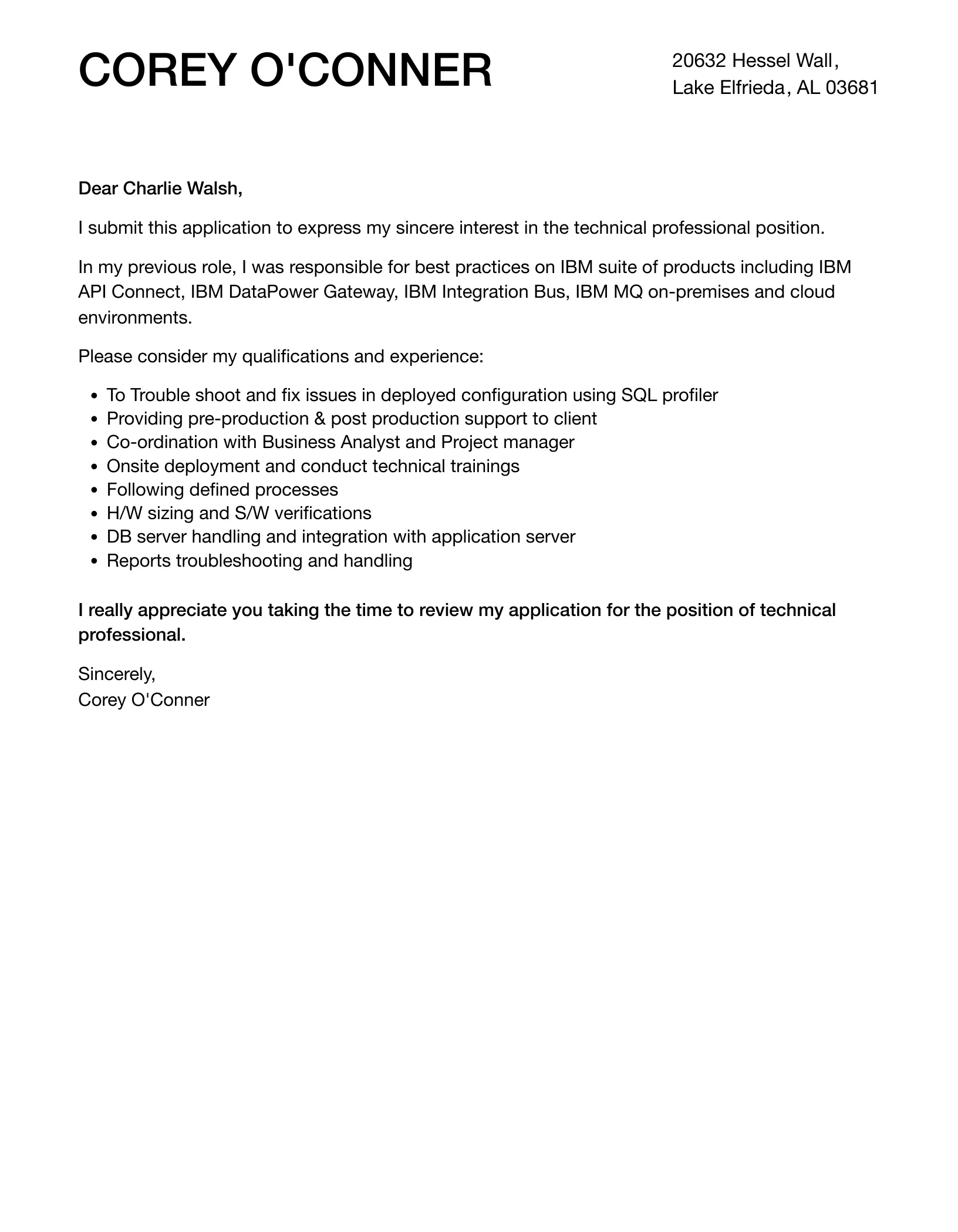
The body of your cover letter is where you demonstrate your qualifications and showcase your value proposition. Select 2-3 key skills and experiences that match the job requirements and provide specific examples of how you have used them to achieve positive results. Use action verbs to describe your accomplishments, and quantify your achievements whenever possible. Avoid simply restating your resume; instead, elaborate on the skills and experiences mentioned and illustrate them with clear examples that demonstrate your abilities. By focusing on your most relevant skills and providing evidence of your past successes, you will demonstrate to the hiring manager that you have the abilities to succeed in the new role.
Showcasing Technical Expertise
In a technical cover letter, it’s essential to showcase your technical expertise. Mention the specific technologies, tools, and methodologies you are proficient in. Tailor your language to the job description, using the same keywords and phrases that the employer uses. Provide examples of how you have used your technical skills to solve problems, improve efficiency, or achieve specific project goals. If possible, include quantifiable results that demonstrate the impact of your technical expertise, for example, “Improved system performance by 15% using [specific technology].”
Quantifying Achievements
Whenever possible, quantify your achievements. Using numbers and data to illustrate your accomplishments makes your cover letter more compelling and credible. For example, instead of saying “Managed projects successfully,” say “Managed projects within budget and on time, resulting in a 20% reduction in project costs.” Quantifying your achievements not only highlights your skills but also demonstrates your ability to make a real impact. It provides concrete evidence of your capabilities and makes it easier for the hiring manager to assess your potential contributions to the company.
Matching Skills to Job Requirements
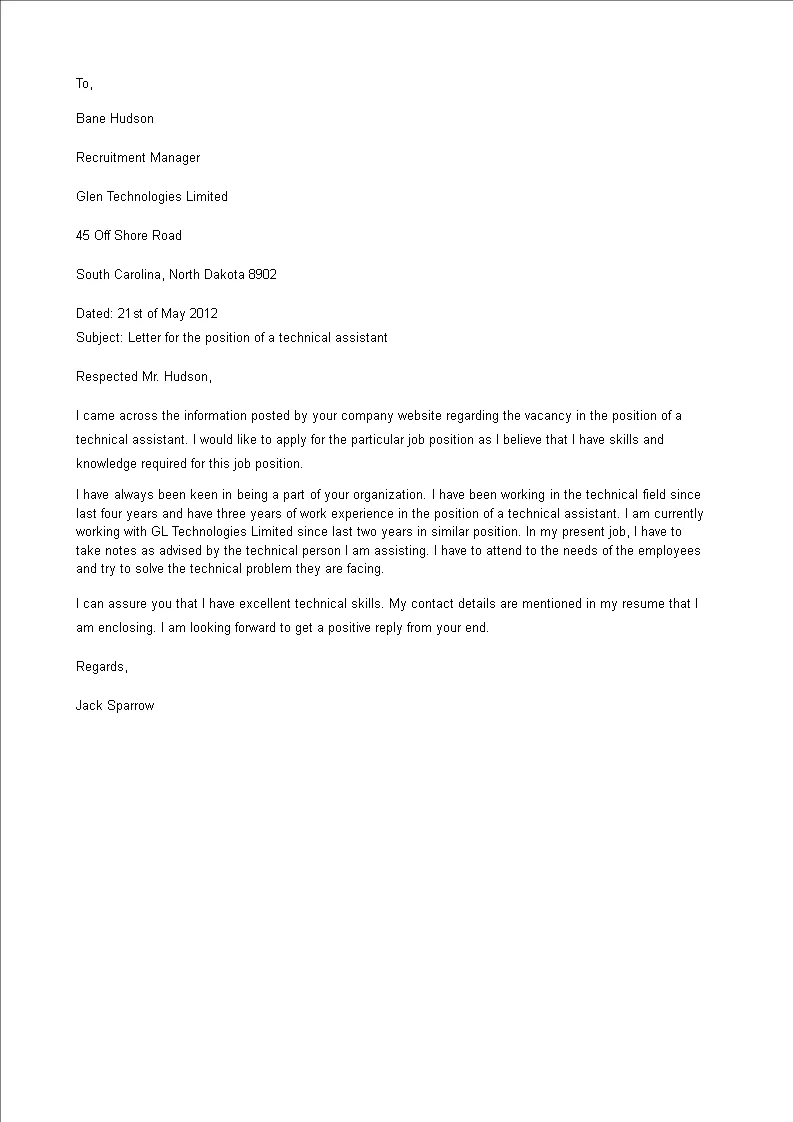
Carefully review the job description and identify the key skills and requirements. Then, tailor your cover letter to specifically address those requirements. Use the same keywords and phrases used in the job description to show that you understand the role and have the necessary qualifications. Briefly explain how your skills and experience match each of the requirements. This demonstrates that you have a clear understanding of the job and are well-suited to perform the necessary duties. By aligning your cover letter with the job description, you will make it easy for the hiring manager to see that you are a good fit.
Demonstrating Company Knowledge
Demonstrating company knowledge shows that you have done your research and are genuinely interested in the company. Briefly mention something you admire about the company, such as their mission, values, or recent achievements. Show your understanding of the company’s industry and how your skills can contribute to their success. This shows initiative, shows you’re serious about the opportunity, and it’s important to make a lasting impression. This also indicates that you did your due diligence, and that you aren’t just sending out generic cover letters to a multitude of companies.
Researching the Company
Before writing your cover letter, research the company thoroughly. Visit their website, read about their products or services, and learn about their culture and values. Check their social media profiles and read news articles about the company. This will give you valuable information that you can use to tailor your cover letter and demonstrate your understanding of the company. Showing that you have taken the time to learn about the company demonstrates that you are genuinely interested in working there and helps you to stand out from other applicants.
Tailoring Your Letter
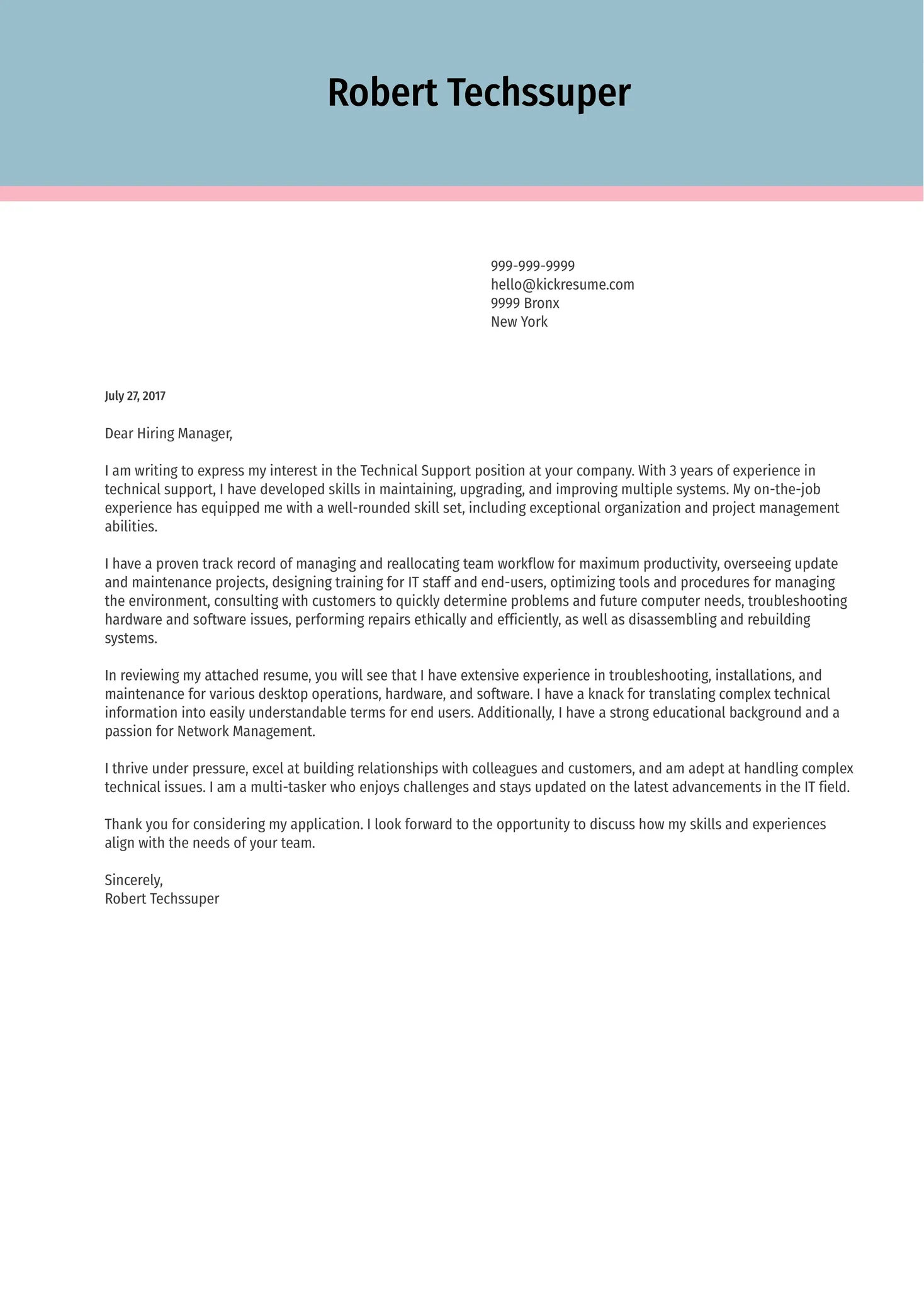
Avoid using a generic cover letter. Tailor each cover letter to the specific job and company you are applying to. Use keywords from the job description and highlight the skills and experiences that are most relevant to the role. Customizing your letter shows the hiring manager that you have read the job description and are genuinely interested in the position. This also shows that you’ve invested time into your application and are not just submitting a generic cover letter that could apply to any job. This level of personalization makes a huge difference.
Expressing Enthusiasm and Interest
Expressing enthusiasm and genuine interest in the role and the company is crucial. Let your passion shine through your writing. Explain why you are excited about the opportunity and what attracts you to the company. This shows that you are motivated and eager to contribute. Your enthusiasm helps create a positive first impression, which is a critical factor in getting noticed and moving forward in the hiring process. Showing you’re not just looking for a job, but the right job, will help you stand out from other candidates.
Call to Action
Include a clear call to action in your cover letter. State your interest in an interview and how you can be reached. Make it easy for the hiring manager to take the next step. Express your availability for an interview and your eagerness to discuss your qualifications further. Provide your contact information, including your phone number and email address, so the hiring manager can easily reach you. A strong call to action helps move the hiring process forward and increases your chances of getting an interview.
Professional Closing
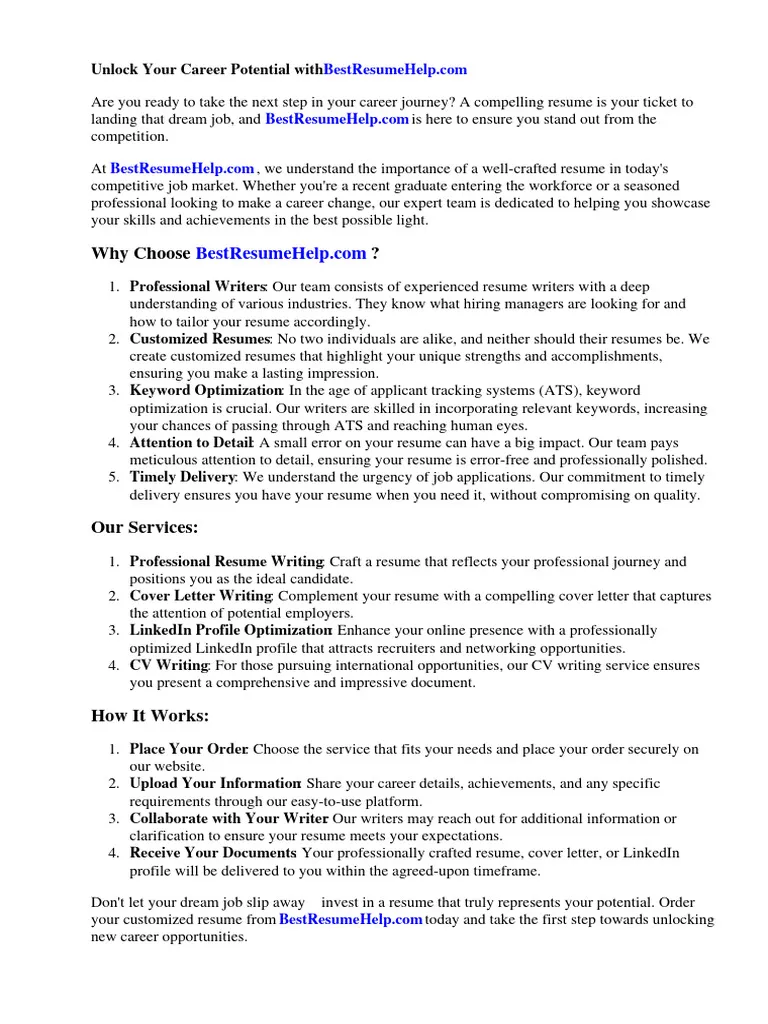
End your cover letter with a professional closing, such as “Sincerely,” “Best regards,” or “Thank you for your consideration.” Choose a closing that reflects your tone and the company’s culture. Avoid informal closings such as “Cheers” or “Best.” Ensure that your closing is consistent with the rest of your cover letter. Proper closing remarks maintain the professional tone of the document and are important to maintain a high degree of courtesy.
Proofreading and Formatting
Proofreading and formatting are essential steps in creating a professional and effective cover letter. Errors in grammar, spelling, or formatting can create a negative impression and undermine your credibility. Taking the time to thoroughly proofread and format your cover letter is a sign of attention to detail, a critical skill in any technical role. Moreover, it shows your commitment to professionalism and increases your chances of securing an interview.
Ensuring Accuracy and Clarity
Carefully proofread your cover letter for any errors in grammar, spelling, and punctuation. Use a spell checker and grammar checker, but also read the letter aloud to catch any mistakes that those tools might miss. Ensure your writing is clear, concise, and easy to understand. Avoid jargon, slang, and overly complex sentences. Get a second pair of eyes to review your cover letter. Ask a friend, family member, or career counselor to proofread your letter. Another set of eyes can easily catch errors that you might have missed. Accuracy and clarity are paramount in a technical cover letter because the hiring manager should be able to see that you can communicate effectively in writing.
Formatting for Readability
Use a clear and easy-to-read font, such as Times New Roman, Arial, or Calibri. Use a font size of 11 or 12 points. Use a professional layout, with appropriate margins and spacing. Avoid excessive use of bolding, underlining, or italics. Break up large blocks of text with paragraphs and bullet points. Formatting your cover letter for readability makes it more accessible and professional. A well-formatted cover letter is easier to read and shows respect for the reader’s time, and is more likely to get your application noticed.
Common Mistakes to Avoid
Avoiding common mistakes is crucial for creating a strong cover letter. These mistakes can undermine your chances of securing an interview, so it is essential to be aware of them. Common mistakes include using generic cover letters, making typos and grammatical errors, and ignoring the job description. By avoiding these pitfalls, you can significantly improve the effectiveness of your cover letter and increase your chances of landing an interview.
Generic Cover Letters
Avoid sending generic cover letters that are not tailored to the specific job and company. Generic cover letters do not show any genuine interest in the company or position. Customize each cover letter to the specific job requirements and the company’s values. Generic letters can immediately get your application tossed aside. Research the company and the role. Show the employer you care, and will make your application stand out.
Typos and Grammatical Errors
Typos and grammatical errors can undermine your credibility and make you look unprofessional. Carefully proofread your cover letter for any errors. Use a spell checker and grammar checker, but also read the letter aloud to catch any mistakes that those tools might miss. Proofreading is a simple step that shows attention to detail. Always take the time to ensure your cover letter is error-free, since the content is important, and errors can undermine your application.
Ignoring the Job Description
Ignoring the job description is a major mistake. The job description is a roadmap to the requirements of the role and the skills the employer seeks. Carefully review the job description and tailor your cover letter to address those requirements. Use the same keywords and phrases used in the job description to show that you understand the role and have the necessary qualifications. Match your skills to the requirements, showing how you are a good fit, and you will significantly improve your chances.
Final Tips for Success
Crafting a compelling technical job cover letter requires careful planning, attention to detail, and a focus on highlighting your skills and experience. By following these tips, you can create a cover letter that effectively showcases your qualifications and significantly increases your chances of landing an interview. Remember that your cover letter is an opportunity to make a great first impression. You can help set yourself apart from the competition with a well-written cover letter that perfectly reflects your qualifications and your enthusiasm for the opportunity.
